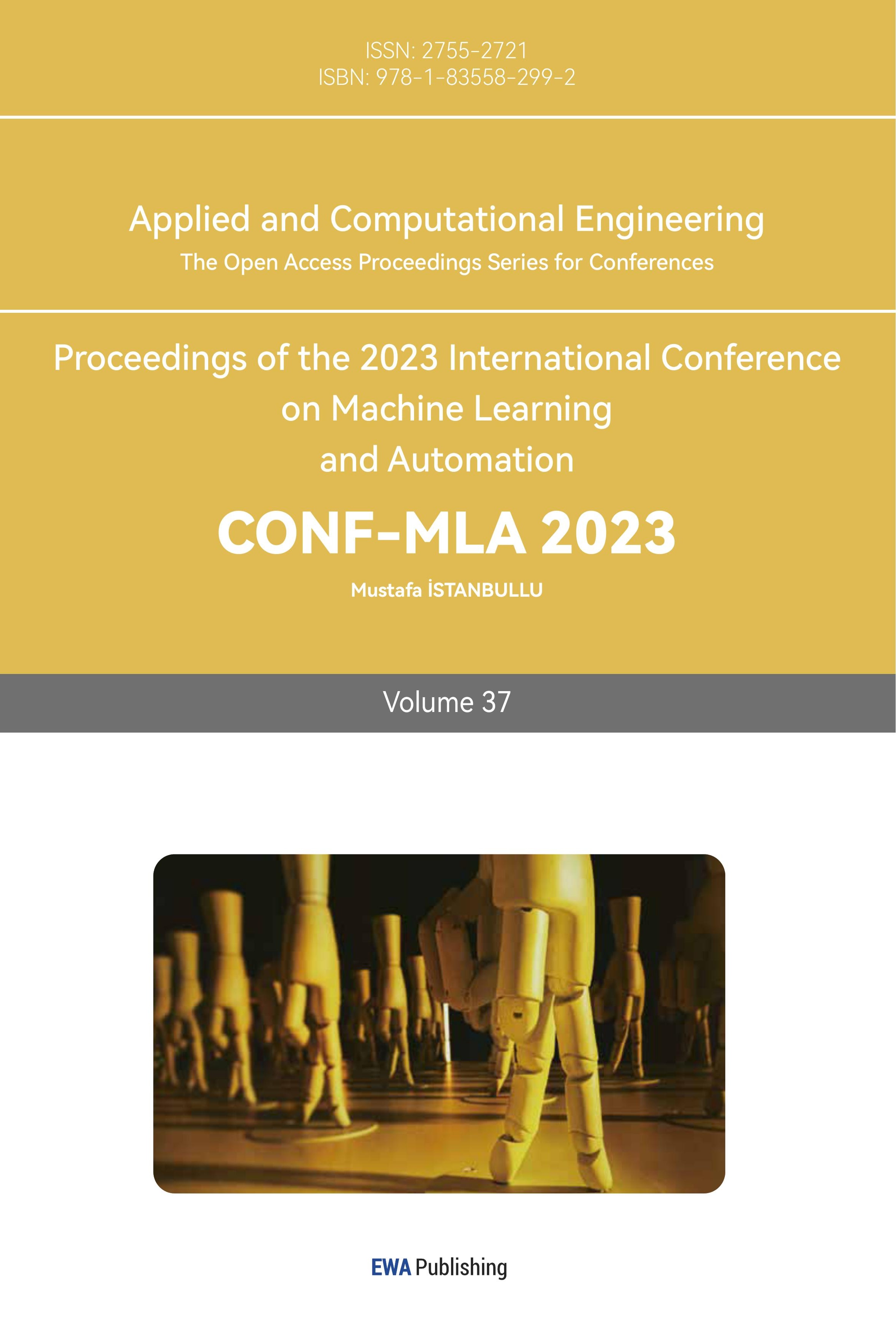References
[1]. Noble W 2006 What is a support vector machine? Nature Biotechnol 24(12): pp 1565–1567
[2]. Dey L et al. 2016 Sentiment analysis of review datasets using naive Bayes and k-nn classifier arXiv:1610.09982
[3]. El-Din D M 2016 Enhancement bag-of-words model for solving the challenges of sentiment analysis Int J Adv Comput Sci Appl 7(1)
[4]. Ahuja R et al 2019 The impact of features extraction on the sentiment analysis Procedia Comput Sci 152: pp 341–348
[5]. Chen Y Zhang Z 2018 Research on text sentiment analysis based on CNNs and SVM 2018 13th IEEE Conf Ind Electron Appl (ICIEA) IEEE
[6]. Can EF Ezen-Can A Can F 2018 Multilingual sentiment analysis: An RNN-based framework for limited data arXiv:1806.04511
[7]. Wang J et al 2016 Dimensional sentiment analysis using a regional CNN-LSTM model Proc 54th Annu Meet Assoc Comput Linguist 2
[8]. Wang Y et al 2016 Attention-based LSTM for aspect-level sentiment classification Proc 2016 Conf Empir Methods Nat Lang Process
[9]. Maas AL Daly RE Pham PT Huang D Ng AY Potts C 2011 Learning Word Vectors for Sentiment Analysis 49th Annu Meet Assoc Comput Linguist (ACL)
[10]. Montesinos López OA Montesinos López A Crossa J 2022 Overfitting, model tuning, and evaluation of prediction performance Multivariate Stat Mach Learn Methods Genomic Predict Cham: Springer International Publishing pp 109–139
Cite this article
Xu,J. (2024). Decoding sentiment: A sentiment analysis model for movie reviews. Applied and Computational Engineering,37,31-37.
Data availability
The datasets used and/or analyzed during the current study will be available from the authors upon reasonable request.
Disclaimer/Publisher's Note
The statements, opinions and data contained in all publications are solely those of the individual author(s) and contributor(s) and not of EWA Publishing and/or the editor(s). EWA Publishing and/or the editor(s) disclaim responsibility for any injury to people or property resulting from any ideas, methods, instructions or products referred to in the content.
About volume
Volume title: Proceedings of the 2023 International Conference on Machine Learning and Automation
© 2024 by the author(s). Licensee EWA Publishing, Oxford, UK. This article is an open access article distributed under the terms and
conditions of the Creative Commons Attribution (CC BY) license. Authors who
publish this series agree to the following terms:
1. Authors retain copyright and grant the series right of first publication with the work simultaneously licensed under a Creative Commons
Attribution License that allows others to share the work with an acknowledgment of the work's authorship and initial publication in this
series.
2. Authors are able to enter into separate, additional contractual arrangements for the non-exclusive distribution of the series's published
version of the work (e.g., post it to an institutional repository or publish it in a book), with an acknowledgment of its initial
publication in this series.
3. Authors are permitted and encouraged to post their work online (e.g., in institutional repositories or on their website) prior to and
during the submission process, as it can lead to productive exchanges, as well as earlier and greater citation of published work (See
Open access policy for details).
References
[1]. Noble W 2006 What is a support vector machine? Nature Biotechnol 24(12): pp 1565–1567
[2]. Dey L et al. 2016 Sentiment analysis of review datasets using naive Bayes and k-nn classifier arXiv:1610.09982
[3]. El-Din D M 2016 Enhancement bag-of-words model for solving the challenges of sentiment analysis Int J Adv Comput Sci Appl 7(1)
[4]. Ahuja R et al 2019 The impact of features extraction on the sentiment analysis Procedia Comput Sci 152: pp 341–348
[5]. Chen Y Zhang Z 2018 Research on text sentiment analysis based on CNNs and SVM 2018 13th IEEE Conf Ind Electron Appl (ICIEA) IEEE
[6]. Can EF Ezen-Can A Can F 2018 Multilingual sentiment analysis: An RNN-based framework for limited data arXiv:1806.04511
[7]. Wang J et al 2016 Dimensional sentiment analysis using a regional CNN-LSTM model Proc 54th Annu Meet Assoc Comput Linguist 2
[8]. Wang Y et al 2016 Attention-based LSTM for aspect-level sentiment classification Proc 2016 Conf Empir Methods Nat Lang Process
[9]. Maas AL Daly RE Pham PT Huang D Ng AY Potts C 2011 Learning Word Vectors for Sentiment Analysis 49th Annu Meet Assoc Comput Linguist (ACL)
[10]. Montesinos López OA Montesinos López A Crossa J 2022 Overfitting, model tuning, and evaluation of prediction performance Multivariate Stat Mach Learn Methods Genomic Predict Cham: Springer International Publishing pp 109–139









